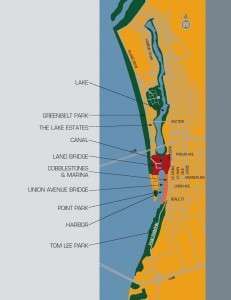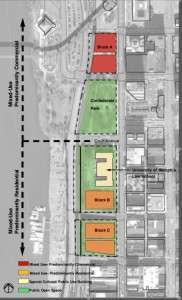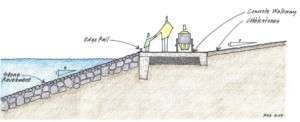At some point in the history of Memphis and Shelby County, local and state legislative leaders decided that “boards”, “commissions”, or “authorities” should take over some of the duties necessary to run our City and County.
Some of these entities became advisory to our governments like the former Memphis & Shelby County Planning Commission (now Land Use Control Board), which prepared plans and recommended amendments to the zoning ordinance.
Others were created as separate operating entities like the Memphis Housing Authority or the Memphis and Shelby County Airport Authority. These authorities have their own self-sustaining revenue streams. But with power to appoint board members and veto debt creation, the mayors and council or commission can exercise ultimate control.
The Memphis Park Commission, when it existed, was semi-autonomous with revenue from the zoo, golf courses, and a few other operations, but like the Park Division today, this commission relied on the Mayor and Council for operating and capital budgets.
Sometime in the past, non-profit organizations stepped up and said, “we can take the burden off of government-appointed boards and staff. We can operate more efficiently and effectively without the rigidity of civil service and public employee unions. We can tap into private charitable donors for revenues. We can produce a return on taxpayer investments. We are the civic elites.”
One of the earliest examples of this was the Mid-South Fair, Inc., which operated an agricultural fair and carnival 10 days during the year at the Memphis Fairgrounds, which was maintained by the Park Commission. Then this non-profit decided to operate all year with the creation of Liberty Land theme park using land and equipment owned by Memphis taxpayers.
The City issued bonds to build Liberty Land, but the Mid-South Fair, Inc. had trouble covering operating costs and never paid for the capital costs. Eventually Liberty Land was closed and the equipment was auctioned off to the highest bidders. The only thing that the Mid-South Fair built left standing was a toilet in the middle of the main parking lot. No return on taxpayer investment.
Private non-profits run the Zoo and Shelby Farms. Both seem to be doing o.k., but there could be problems of accountability and interaction with the public. Citizens to Preserve Overton Park was upset because the Zoo expanded into part of the “old forest”. And the Beale Street Development Corporation……. well that’s another story.
Then there is the case of the non-profit Agricenter International, Inc. at Shelby Farms, which was hired by the Agricenter Commission to operate the State-funded Exposition Center and 1,000 acres of the County’s land. From the beginning Agricenter International had to be subsidized by the taxpayers and over about 20 years received some $19.4 million, not including all the repair work done by County departments free of charge. When this non-profit began to make a “profit” a few years ago, the operation had nothing to do with agriculture, which may be a violation of State law. The Exposition Center has become our Convention Center East; an ugly RV park greets visitors; and no money has been paid back to taxpayers, but there are signs of good days ahead with unified planning and a conservation easement through the [1] Shelby Farms Conservancy.
Now we come to the latest non-profit to be put in charge of a major public asset – the Riverfront Development Corporation (RDC) although many say that RDC stands for “Retired Directors Club” since its staff retired from $100,000 plus jobs with the City to take $200,000 plus RDC jobs. Not that there is a problem with the dollars, but receiving a pension from the City and still being paid by the City under the contract with RDC seems ethically challenged, even if they haven’t started to draw their pensions?
RDC was created in 2000 as a general welfare non-profit corporation “to create and implement a Master Plan for development of the Memphis Riverfront”, which is deemed to be 5 miles long from the burial mounds at the Ornamental Metal Museum to the mouth of the Wolf River.
The board of directors has been an ever changing who’s who of Memphis. The current board has 20 members plus 15 ex officio members. Mayor A C Wharton is one of the 20. Is this a real conflict of interest since the Mayor must exercise oversight and sign contracts with the RDC? I guess he negotiates with himself before going to board meetings.
According to the RDC web site, the Master Plan was completed in 2002 by Cooper Robertson and Partners and “endorsed” by the Memphis City Council. A cast of hundreds of Memphis citizens had some level of involvement while the plan was being prepared.
Then the RDC got a panel of expert real estate developers from the Urban Land Institute (ULI) to spend a few days in Memphis during March of 2003 to review the plan for soundness.
The panel found that the Promenade could primarily support retail and residential uses and that the Land Bridge had some market potential: but in the end found too many negatives with the Land Bridge. The panel finally suggested that the use of eminent domain should be promoted to take land within the Promenade.
The panel also had some questions about the roles of the RDC and the Center City Commission. 
After this review Cooper, Robertson and Partners produced the “Memphis Promenade Public Realm Plan”, which was “accepted” by the Memphis City Council in May 2004. Again a cast of hundreds participated in its creation. This is the plan that shows private commercial development on the Promenade in violation of the founders’ public use easement given to the citizens of Memphis in perpetuity.
The next planning effort by the RDC was the design of Beale Street Landing, a floating boat dock with restaurants, walkways and seating areas. This is the project that could be the downfall of RDC.
After designing the project in 2004, the City Council approved funds in its capital budgets for 2005, 2006, 2007 for 5 phases of construction.
Recently, the Council learned that the final bill for the project may be much higher than expected and that the city’s indebtedness could go to $31 million up from the $22 million estimated a few years ago; and RDC did not tell anybody when they first learned of the increase while continuing to sign construction contracts.
On top of this dilemma the cobblestones restoration continues to be hotly debated, with many believing that the restoration is not in keeping with the historic original landing. The project is expected to cost another $6.9 million [a mere $1.1 million of City funds], but delays and new designs could increase the costs of this project even more.
The political and legal fights over the Promenade use could go on for years. Currently the RDC is working on a Land Use Plan for Mud Island with another cast of citizens numbering in the hundreds. Skate park supporters seem to be the loud ones.
RDC and Memphis have had a contract for the management of the riverfront and its 11 parks since 2001. The first iteration, which was for five (5) years, called for Memphis paying RDC $2.4 million per year through FY 2006. This initial contract also established annual reductions in payments for the 2nd five years until only $0.5 million would be paid in FY 2010 and 2011. The City’s Parks Division was to continue park maintenance!
However, an “amendment” in 2006 to the original agreement called for annual increases for FY 2007 through FY 2011 with the final year’s payment being $2.6 million (FY 2011). The current year’s payment is $2.5 million.
Between 2003 and 2009, RDC’s operating revenues were 27% from park operations and 59% from the management contract. Park operations revenues have been flat since 2006 at around $1.5 million per year. The promise of self sufficiency has been illusive.
Where will it end or evolve? An agreeable Master Plan doesn’t seem to exist (the first purpose of the RDC) and the second purpose, implementation, is becoming a problem. A decade has gone by since this all started. Should we have expected more?
Maybe A C Wharton can repeat his successful consensus-building on Shelby Farms by bringing the RDC and the Friends for Our Riverfront together in a room and “locking the door.” Maybe the RDC should be folded into the Center City Development Corporation with the Center City Commission doing the planning, the CCDC doing the development, and the Parks Division doing the management of the parks again.




It’s really depressing how mired in bureaucracy this city is and yet it still can’t make one single choice that will actually work out in the best interest of the public continuously into the future, worse, it takes an entire generation to create these eventual outdated catastrophic failures.
We might need to consider that the current “talent filter” for leadership here is not in touch with reality and thus is designed whether on purpose or buy accident, to FAIL.
SERIOUSLY.
The hierarchy of priorities is unfathomably out of place. I’m beginning to doubt that this city has any chance for a future at all. I hat to say that because there are many great people here, but, I’ doubting this fight is winnable. It may not even be worth winning.
Fooled ya!
Expect another round of federal butt kicking in your future Memphis knuckleheads. You have to get on the page with the rest of he country before you spout regionalism, heck, you have to run the city as a success FOR SOME TIME before you can realistically expect that to EVER happen.
I don’t think you have what it takes!
PROVE ME WRONG. I can’t stand being right.
While the author is correct in suggesting that the RDC has been an utter and total failure, that really has nothing to do with its nonprofit status. RDC’s was a failure of purpose, compounded many times over by its own incompetence.
That purpose? One and only one, which was decided without public input even before the RDC was incorporated: Take over a great public space and massively develop it, based on the movieland fantasy of “Build it and they will come.”
The article’s conclusion, a tiresome trope about “bringing [them] together in a room and locking the door,” just demonstrates how clueless Memphis’ self-proclaimed thought leaders really are.
Thanks for the context Gene. I don’t have much to add other than hoping for the best outcome.